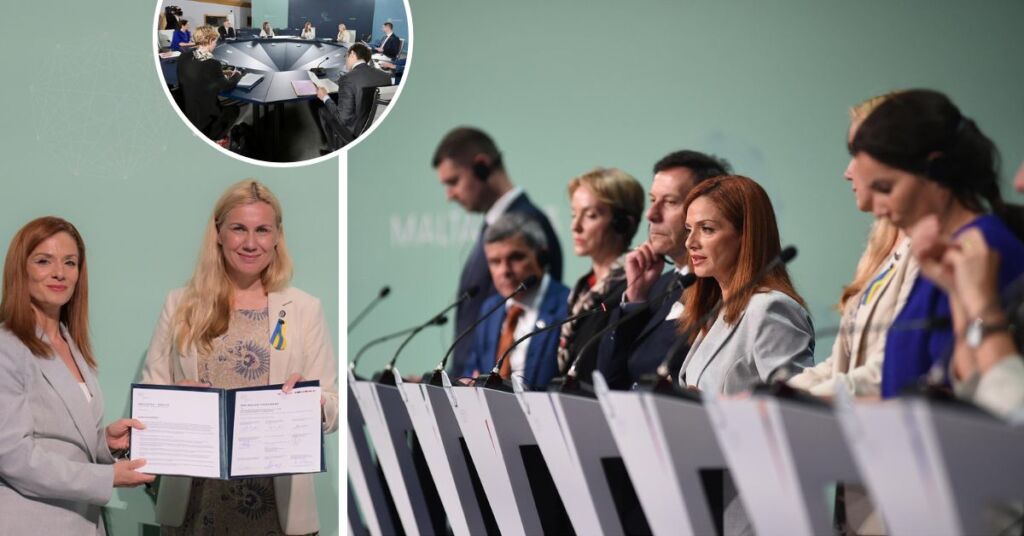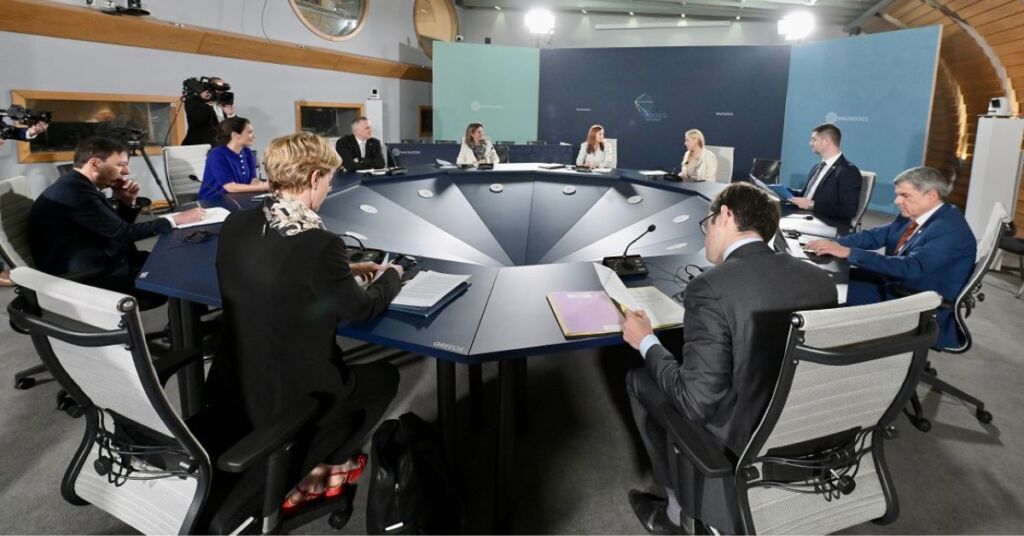MED9 Sign ‘Malta Agreement’: Is It As ‘Historic’ As Energy Minister Miriam Dalli Claims?

The first ever meeting of the MED9 – bringing together energy authorities from nine European Union countries around the Mediterranean – just came to a close, and Energy Minister Miriam Dalli is touting a “historic agreement for Mediterranean countries in the field of green energy”.
“Today marks our first step to join forces and to work harder as MED9 countries, together with our Mediterranean partners,” said Dalli.
“Malta is working hard to achieve its climate and energy objectives, as we look forward to new investments in offshore renewables and battery storage systems, and to double our interconnection with mainland Europe, for increased sustainability and security in the coming years.”
The MED9 is an alliance of Southern European Union countries – informally established in 2013 to create coordination on issues of common interest within the EU. These included the “green transition” and securitisation of our energy supply.
After just ten years – during which time the climate crisis has continued to worsen – the MED9 actually got together to talk. Even more incredibly, they actually managed to come to a “historic agreement”.
So, what exactly makes this agreement so “historic”? I bet its contents explain why the above video is accompanied by such epic, inspirational music.
Well, the nine countries – Croatia, Cyprus, France, Greece, Italy, Portugal, Slovenia and Spain – signed the “Malta Statement”.
This is a joint declaration “launching the vision for the Mediterranean Region as a Hub of Green Energy, to accelerate the EU’s drive for a decarbonised, energy-independent future”.
Sounds great. Sounds amazing. Sounds visionary. Sounds historic.
Here’s a list of the commitments made in this MED9 agreement. Keep in mind, these are ten years in the making. A decade. One tenth of a century. At least 3650 days.
- Agreed that the Mediterranean can become a centre of renewable energy investments
- Launched a steering committee to work together and plan the way forward for the establishment of the Mediterranean Green Energy Hub.
- Invited EU Commission to conduct a comprehensive report to study the potential of green energy corridors linking Europe with the renewable energy potential in neighbouring North African countries, and to prioritise funding for the development of these critical Mediterranean interconnections.
- Agreed to prioritise investments in renewable energy solutions, such as offshore renewables, solar PV power generation systems, the production and transportation of renewable hydrogen, and storage solutions.
- Nine countries will work to make sure that every member state can benefit from the Mediterranean region’s green energy potential.
Did you catch that? They agreed to agree about some future agreements which will make the Mediterranean a centre for renewable energy.
And they’re inviting the EU Commission to look into the potential of green energy corridors.
And it only took ten years.
“We all recognise that investments in renewable energy infrastructure are not simply a forward-looking commitment with long-term objectives,” said Dalli.
“These investments are the best solution to our current challenges.”
If those investments are the best solution to our current challenges, it would be super cool to have a € figure tagged onto them.
At COP27 last year, PM Robert Abela spoke to the much larger delegation and said, “Only actions will deliver results to safeguard our environment, not just goodwill”.
The PM made a great point. There have been 27 COP meetings. A lot of posturing and goodwill, and it took 26 COPs before coal – which is the single biggest fossil fuel contributor to climate change – was explicitly addressed in a COP agreement.
How many MED9 meetings will it take for a substantive agreement, complete with price estimates and binding targets, to get set in stone?
Until that actually happens, what we do have to base our hopes on are our actions. Lets take a quick look at what the state has been doing, shall we?
Malta is keeping the door open to technologies such as fusion and nuclear energy – but hasn’t decided whether or not to go in that direction. Until we decide, we’re stuck with the vast majority of our energy coming through the combustion of fossil fuels.
Project Green has planted saplings. Infrastructure Malta has ripped mature trees out of the ground.
Malta has got around 430,000 cars (and counting) on its roads – 75.8% of which are passenger cars – and though a very small proportion of them are electric or hybrid vehicles, the majority are petrol-powered.
Travelling by bicycle is a great alternative to travelling by car. Shame that doing so is really only an option for those prepared to face their own mortality on a daily basis.
MEP David Casa recently passed the Social Climate Fund through the EU Parliament, which will mobilise €60 million towards Malta to help stave off the worst of the economic impacts of the climate crisis and the energy transition it necessitates.
Dalli has claimed that “extremism gets you nowhere” – but it could be argued that going nowhere while talking about going somewhere also gets you nowhere.
Granted, this meeting is a “first step” for the MED9. Nine signatures on a piece of paper are great. You got to sit around a cool nine sided table, that’s great. But what are you actually going to do?

Was this meeting “historic”?
Well, actually, yes. In the same way that everything that has ever happened in history is technically “historic”.
Is it going to be considered a notable turning point in the history of the Mediterranean fight to prevent the worst of the climate crisis? That isn’t for me to say.
But no.
Do you think that the MED9’s “Malta Statement” is going to save us?
